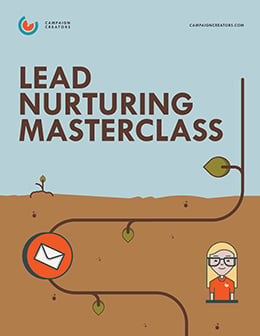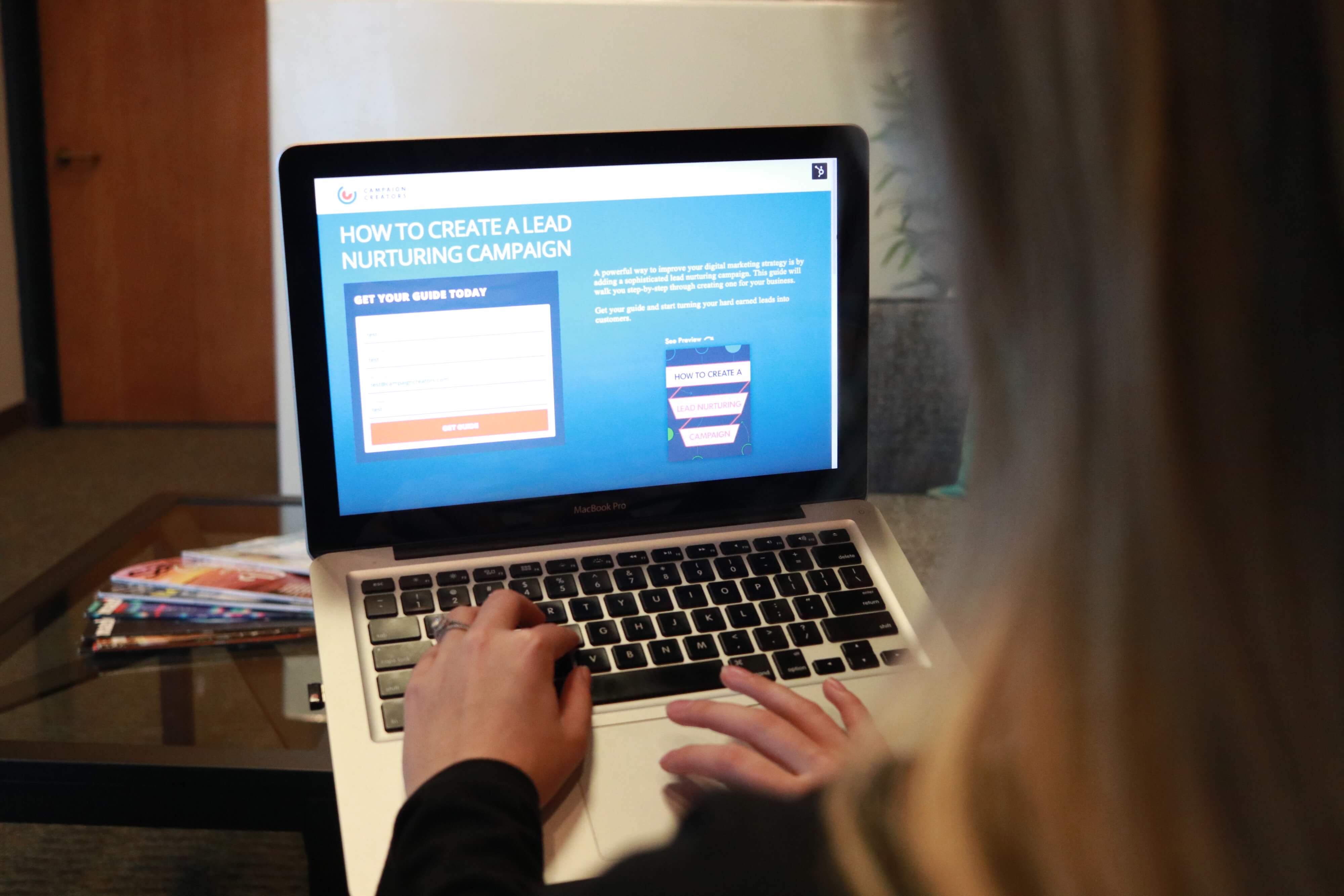Welcome back to the Lead Nurturing Masterclass! In this lesson, we’ll dive into how to craft a lead nurturing campaign that guides leads through their buyer’s journey towards a purchase from your company. This includes creating offers catered to your target audience at every stage of their journey, maximizing the conversion rates of your landing pages and connecting it all with email sequences that progressively nurture leads towards buying from you.
What is a Lead Nurturing Campaign?
A lead nurturing campaign focuses on actively moving leads through the stages of their buyer’s journey and into your paying customers. By providing prospects the information they need in their decision-making process, you build a relationship with your lead and establish your brand as a trusted source of information. That way, when the time is right, your buyer will be much more likely to buy from you.
Benefits of a Lead Nurturing Campaign
First and foremost, a lead nurturing campaign will increase the rate of leads who make it all the way through your sales funnel and become customers. Other positive results of lead nurturing campaigns include shorter sales cycles and lower cost per customer acquisition, which means increased ROI.
Additionally, the process of building out a nurturing campaign helps you better identify and understand your customer needs and goals, build a stronger reputation in your industry, and set the stage for stronger and longer relationships with those leads who become customers.
Finally, lead nurturing campaigns increase the lifetime value of your customers and decrease customer churn by nurturing your current customers to make repeat purchases.
Core Elements of a Lead Nurturing Campaign
Although there are a variety of ways to structure a lead nurturing campaign—based off of the company, its customers, and its respective industry—the most successful campaigns share a few core elements that play a large role in pushing leads down the sales funnel. Let’s go over these components, and the role they play in the effectiveness of your lead nurturing strategy.
The core pieces for building a lead nurturing campaign include:
- Hook (lead magnet or offer)
- Landing Pages
- Personalization and Segmentation
- Emails
- Workflows
- Nurture Content
- Reporting and Analytics
- Optimization
- Operator
- Automation Tools
Hook (aka Lead Magnet or Offer)
This is what initially attracts a person to your brand and gets them into your database. A hook can be a coupon, a free assessment, a month of free service, or a content piece such as an e-book or guide. Most importantly, a hook must deliver something your persona perceives as valuable.
Landing Pages
Landing pages, also known as “lead capture pages,” are a primary way of delivering your offers or hook to leads, and are the way in which you collect a visitor's contact information, turning them into a lead (or marketable name) in your database. They redirect the user away from website pages or email links to a lead form, which promises content or an offer of value in exchange for the lead’s personal information. A strong call to action is arguably the most important part of any landing page, followed by a quality offer, and well-designed page template.
To make sure you have a strong and successful landing page, make sure you have the following:
- Engagement level— engaged subscribers show clear interest in your product offers and yield high email open rates; they should accordingly be reached out to more frequently. Less engaged subscribers, whose interest is waning, should be treated carefully and contacted on a “quality over quantity” policy. They may require a re-engagement campaign.
- Purchasing patterns— The purchase history, frequency, and recency of customers is another powerful dataset to use in creating relevant and timely offers. However, keep in mind that the individual’s info matters as much as the group’s when it comes to retaining contacts. Frequent buyers and big spenders rightfully deserve to be treated like they are valuable.
- Demographics— finally, demographic data like age, gender, and geography cannot be discounted. As visuals and product pricing may be major features of your email body, it is important to draw recipients in with the products that matter to them.
Segmentation
This approach to dividing your database of contacts involves assigning them to groups with similar characteristics, needs, and interests in order to deliver a more personalized experience. You can segment your lists of contacts and leads using data collected explicitly through forms, as well as from interactions they have with your company after entering your database.
23% of email campaign engagement is dependent on the level of segmentation used.
Characteristics of these segmented lists can be based on demographics or behavior. More specific criteria can include the lead’s:
- Location
- Position/Job Title
- Stage in the buyer's journey
- Persona
- Entry point into the campaign
- Content they have interacted with
- The products they have purchased (or viewed)
Personalization
Personalization consists of tailoring content, offers, communication, and as many other elements of the campaign as possible to accommodate specific individuals. Personalization can be tied to groups or segments of individuals—a primary reason why lead segmentation is so important to a lead nurturing campaign.
In the context of a modern marketing landscape where automation is ever present, it’s fully possible to create customized experiences for your leads with the help of analytics and foresight on the part of the marketing team.
Email remains the primary way you communicate one-on-one with your leads and customers throughout a campaign; they are the backbone of lead nurturing. Marketing emails can be divided into three major categories: blast emails, nurturing emails, and drip campaigns.
- Blast emails: an email with an offer is sent out to the entirety of the lead database.
- Drip emails: Series of emails sent based on well-arranged schedules.
- Triggered emails: Sent based off behavioral segmentation of the leads.
While blast emails have their place, primarily bringing initial awareness to a campaign, they lack the personalization and timeliness necessary for a stellar email strategy.
This is where drip and nurturing emails come in, more similar to one another while maintaining a few key differences. In contrast with blast emails, drip emails encourage leads to keep the company top-of-mind as they approach a buying decision and serve to progress a lead to the next stage. Triggered emails, meanwhile, are based off behavioral segmentation of the leads. Custom emails are sent after a lead takes a specific action such as downloading an e-book, visiting a product page, abandoning their online shopping cart, etc. These two varieties of email marketing are most effective when combined with one another.
Lead Nurturing Workflows
A workflow is a set of automated actions triggered by certain events. In a lead nurturing campaign, workflows are used to tie together the pieces of your campaign together in order to progress your lead from one stage of their journey to the next. Actions can include things such as sending an email or SMS message or adding a lead to a segmented list.
For example, if you would like to nurture a lead after they fill out a form on your website, you could utilize a workflow to automatically send them a series of nurture emails over time. You could also trigger a series of emails with a coupon to visitors who place an item in their online shopping cart but fail to follow through on the final purchase.
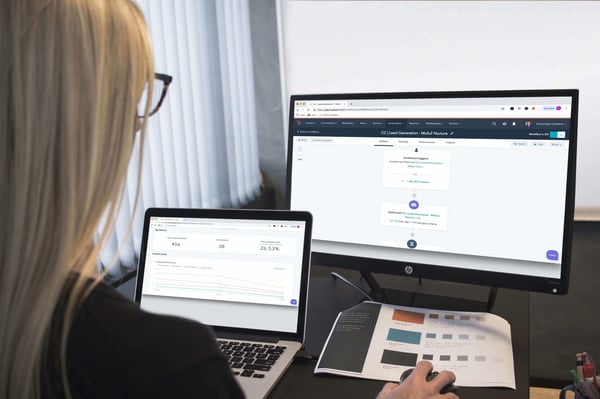
Workflows can also help bridge the gap between marketing and sales. For example, an email alerting a sales person could be triggered any time a lead crosses the threshold, turning them from a marketing qualified lead to a sales qualified lead. You could also use workflows to update contact information (such as their stage in the sales funnel) based on actions they take with your company on and offline.
Nurture Content
A steady and relevant flow of content on various platforms is imperative in guiding leads and eventually converting them into customers. This goes for everything from the body copy in emails to landing pages to social media posts!
Thoughtful lead nurturing campaigns begin with content mapping, a process in which content is designated to be received by leads at appropriate points throughout the campaign. The 3 stages of the buyer’s journey—awareness, consideration, and decision—serve as effective guidelines for content mapping, as do the phases of the marketing funnel.
We will cover each of these in more detail below when we outline the steps to creating a lead nurturing campaign.
Optimization
“Optimization” may sound like a vague term, but aside from general tips like maintaining detailed schedules and keeping campaign content consistent, optimization of a nurturing campaign is founded on a basic principle of “test-and-tweak.” A/B testing and closed-loop reporting are primary ways of accomplishing this, as they provide feedback on major elements of your campaign.
A/B testing, in particular, offers a high level of control of your email campaigns; individual variables can be tested and modified accordingly with nearly the precision of a scientific experiment. But testing is not limited to emails and can be applied to landing pages, social media messages, CTA's, and more.
![]()
Reporting and Analytics
Closed-loop analytics refers to how your marketing team can use and exchange information with your sales team to create more comprehensive analytics for a lead nurturing campaign. It creates insight into the entirety of the customer life cycle, from the time they enter the funnel to the point at which they make a purchase. General analytics require the help of the proper software tools, as we’ll discuss below.
Operators (Driver/Strategist/Analyst/Technologists)
An operator refers to the type of marketer and/or skill sets needed to execute a nurturing campaign successfully. They may be an existing, permanent member of your marketing team, or acquired from an outside source like a marketing agency.
Automation Tools
Automation at some level is crucial to implementing a lead nurturing campaign. The type of automation software required varies from email automation programs to full-stack marketing automation systems. For more detailed information on choosing the right marketing automation system to fuel your lead nurturing campaign refer back to Lesson 3.
Another important tool needed is a customer relationship management software (CRM), which allows you to synchronize the activities of your sales and marketing teams and record your leads’ relationships with your company. General marketing software that manages marketing data, like HubSpot’s Marketing and Sales software, is also needed to manage analytics and track the effectiveness of your campaign activities.
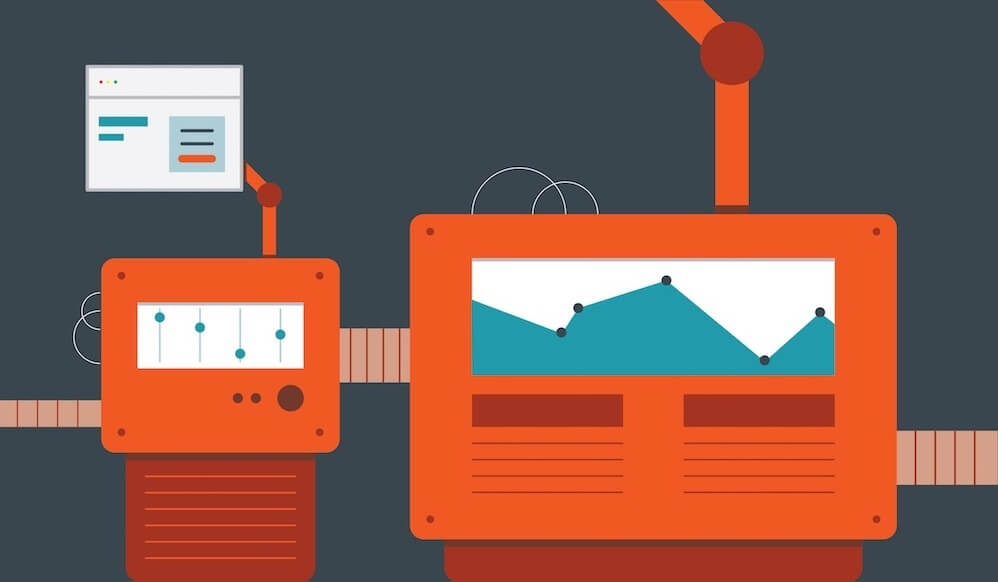
Your email campaigns can be managed by entirely standalone clients (MailChimp, Constant Contact) or integrated with the software mentioned above. Even smaller elements, such as landing page design and email layouts, can also be handled as features in more comprehensive software options like HubSpot Marketing or Marketo, or in standalone platforms.
How to Create a Lead Nurturing Campaign in 6 Steps
The essential steps to follow when creating your lead nurturing campaign are:
- Determine the goal for your campaign
- Determine the target audience
- Map out your buyer’s journey
- Determine what information they need at each step
- Determine the best offer to provide that information
- Determine the best way/channel to present your offer
Step 1: Determine the Goal for Your Campaign
Defining the goal of your lead nurturing campaign gives you direction. Without a start, there is no finish. Your goal should be complementary to that of your prospective buyer, effectively benefiting you both.
You can set your goal from the top down - who am I trying to serve with my product or service? In this case you goal could:
- Solve for the pain points of a particular persona or set of personas.
- Attain more customers from a specific industry or segment.
- Gain more customers who fit your ideal client profile.
- Increase purchases from current customers.
Or you can set it from the bottom up - what product or service am I trying to sell? In this case your goal would be to increase purchases of that product or service or contract renewals.
Or your goal could be focused on improving your processes or efficiency. For example, your goal could be to decrease the time it takes a new lead to make their first purchase or the amount of touchpoints needed to close a sale.
Step 2: Determine the Target Audience
The first step to determining your target audience is knowing your buyer personas. Buyer personas are a semi-fictional representation of your ideal customer, based on market research and real data about your existing customers. If you need help creating your buyer personas, refer back to Deciding Who to Nurture from Lesson 2.
Now if your goal was set from the top down, then you may already know who you are targeting. If you set your goals from the bottom up, then you need to ask yourself, “Which of my buyer personas benefit from the product or service I am trying to sell?”
On the other hand, if your goal is focused on improving processes or efficiency, then you need to determine which buyer persona you can target that will have the greatest impact on this goal. For example, if your goal was to decrease the number of touchpoints needed to make a sale, then you probably want to look a the most common buyer persona you have in your database right now—because that is where your efforts will have the greatest business impact.
Once you know which persona you are targeting, you can add on layers such as market segments or company profiles, which we will dive into deeper in the next two lessons.
Step 3: Map Out Your Buyer’s Journey
In order to properly outline a lead nurturing strategy, any and all content needs to correlate to its respective stage in the buyer’s journey. This requires a good understanding of what the buyer’s journey looks like.
Typically, the buyer’s journey is segmented into three stages: awareness, consideration, and decision.
- The awareness stage refers to the TOFU or the top of the funnel because that’s where buyers normally start researching their pain points or goals. This is when people go in search of answers to identify resources and to problem solve.
- The consideration stage refers to the MOFU or the middle of the funnel. Now that buyers have identified a problem and done some research, this is where they will begin considering all their solutions. After a solution is established, an assessment of solution providers begins.
- The decision stage refers to the BOFU or the bottom of the funnel because it is the last stage in the buyer’s journey. This is when buyer’s make a purchasing decision.
So with each step in the buyer’s journey now broken down, what is the best way to position your TOFUs, MOFUs, and BOFUs? After all, a structured outline of your campaign is only as strong as what is actually in it.
While it may seem intuitive to begin from the top down by identifying common pain points and funneling down to your products or services, you can essentially start your campaign from the bottom up so long as you address your product or service first and end with addressing how it solves pain points.
No option is better than the other, so proceed with the style that best suits the goals you set for your campaign.
Step 4: Determine What Information They Need at Each Step
To understand what information your buyer needs at each stage you should ask yourself, or seek the answers to, a series of questions to get inside their heads. We covered these in Lesson 2, but as a recap...
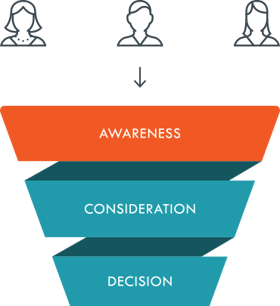
To understand your buyer in the Awareness stage, ask yourself:
- How do buyers describe this goal or pain point? (This may not be how you refer to it internally.)
- What are the top causes for this pain point or reasons this goal is not being met?
- What does your buyer have to gain if this pain point is addressed or goal is met?
- What are the consequences of inaction by the buyer?
- Are there common misconceptions buyers have about addressing the goal or challenge?
- How do buyers decide whether the goal or challenge should be prioritized?
- How do buyers educate themselves on this goal or challenge? (Where do they look for information, or what types of information speak to them?)
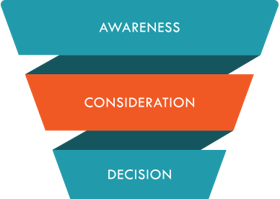
In order to understand the Consideration stage for your buyer, ask:
- What categories of solutions do buyers investigate?
- How do buyers educate themselves on the various categories?
- How do buyers perceive the pros and cons of each category?
- How do buyers decide which category is right for them?
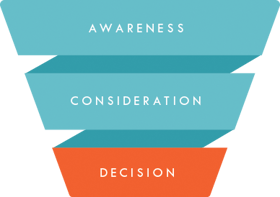
Lastly, the questions you should ask to understand the Decision stage for you buyer are:
- What criteria do buyers use to evaluate the available offerings?
- When buyers investigate your company’s offering, what do they like about it compared to alternatives? What concerns do they have with your offering?
- Who needs to be involved in the decision? For each person involved, how does their perspective on the decision differ?
- Do buyers have expectations around trying the offering before they purchase it?
- Outside of purchasing, do buyers need to make additional preparation, such as implementation plans or training strategies?
Now, at each stage the goal of your content is to provide the answers to these questions for your lead, so they feel prepared to move to the next stage of their journey.
Step 5: Determine the Best Offer and Channel to Provide that Information
Once you understand your buyer and have a clear picture of the information that they need, you must determine the best way to communicate that information to them. This starts by choosing the best format for your offer. Some examples of lead nurturing content formats include:
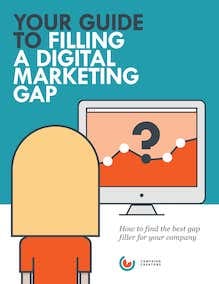
- E-books
- Workbooks
- Coupons
- Free Trials
- Comparison Guides
- Consultations
- Case Studies
- Webinars
Once you have decided what your offer will be, you need to decide the best channel to communicate that offer. Some examples of lead nurturing channels include:
- Landing Pages
- Messenger Apps
- Mobile Marketing (i.e. SMS)
- Retargeting Ads
- Dynamic Website Content
The format and channel should be guided by your buyer persona. How do they prefer to intake information and where do they prefer to receive it?
Step 6: Tie It All Together with Automation
The final step is to use automated workflows to connect all of the pieces of your campaign together and progress your lead from one stage of your campaign to the next. The workflows you employ will vary between B2B, B2C, and eCommerce lead nurturing campaigns. Don’t worry, we will dive into the workflows needed for each type of campaign in the following two lessons.
But first, just what is the difference between these campaigns?
The Difference Between B2B, B2C and ECommerce Lead Nurturing Campaigns
The elements of lead nurturing campaigns vary somewhat depending on whether they're designed for B2B (business-to-business), B2C (business-to-customer) or eCommerce marketing.
The reason these campaigns are different is because typically the sales funnel, and the journey your buyer travels down your funnel, looks different across these three markets. So it’s important that we understand each.
B2B Nurturing Campaigns
According to a report, 65% of B2B marketers have not established lead nurturing. That could be because it requires heavy coordination between all departments in a company.
B2B marketing typically deals with smaller client databases and longer sales cycles, making a measured and detailed, yet flexible campaign strategy optimal. Campaign promotion all happens at top of funnel, but can change over time (with addition of TOFUs, entry points, awareness channels, etc.). The middle of the funnel, in contrast, stays rather constant.
A singular, linear customer pathway characterizes the lead nurturing process: the lead, initially a responsibility of the marketing team, converts to an SQL, being passed to the sales team, and then to a client. With the exception of SaaS or membership models, which incorporate retention and upgrade marketing tactics, repurchase then becomes a sales team and client management responsibility; a lead no longer has marketing value once they convert. The good news for you—once a lead is successfully converted into a customer, you get to pat yourself on the back for a job well done.
B2B lead nurturing campaigns tend to require more work up front when setting up the campaign and laying down your strategy, and less after its launch. In other words, analytics and optimization—though by no means is hands-off—require less effort, typically because a longer period of time is needed to see results and test. Conversions from one stage to the next, taking the form of form fills, serve as primary performance indicators for the campaign.
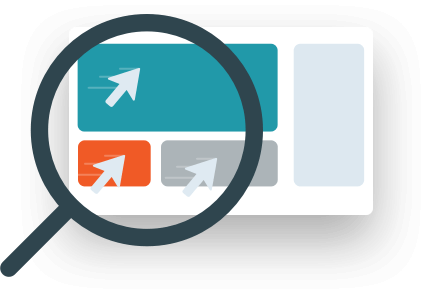
B2C and ECommerce Nurturing Campaigns
ECommerce and B2C marketing tend to deal with larger customer databases and shorter sales cycles. B2C campaigns are characterized by a top of the funnel that remains constant, while the middle of funnel is very dynamic. They require a fine-tuned promotional content calendar and a stronger hook, detailed segmentation and, in the case of eCommerce, need to be fully integrated with your company's online store.
B2C and eCommerce campaigns are higher-maintenance after launch, with constant iterations and optimization needed. That’s because, unlike B2B, B2C leads continue to be marketing targets even after becoming customers and their behavior is more prone to fast-paced changes. Furthermore, you are dealing with multiple customer pathways instead of one.
The campaign funnel is primarily email-based, and the email campaign itself necessitates a series which, as we discussed, incorporates a variety of different types of emails. While the top of the funnel (hook) remains stable, the middle changes constantly. Since promotional emails happen in middle of funnel, your promotional calendar must be flexible and keep up with the pace. Email opens and click-throughs, as well as product purchases, serve as primary indicators for your lead nurturing campaign.
Feel like you have a better understanding of lead nurturing campaigns? Take your learning to the next level by applying your knowledge in the Lesson 6 Exercise below.
Lesson 6 Exercise
Determine Your Campaign Goal and Audience
Refer to the section How to Create a Lead Nurturing Campaign in 6 Steps. Complete Step 1 by determining a goal for your campaign. Remember, you can set your goals from the top down or from the bottom up. Then complete Step 2 by determining the target audience for your campaign.
My Campaign Goal:
My Target Audience:
Now that you know the difference between these campaigns, we will spend the next two lessons diving into crafting each. Starting with Lesson 7: B2B Lead Nurturing Campaigns and followed by Lesson 8: B2C and ECommerce Lead Nurturing Campaigns.

